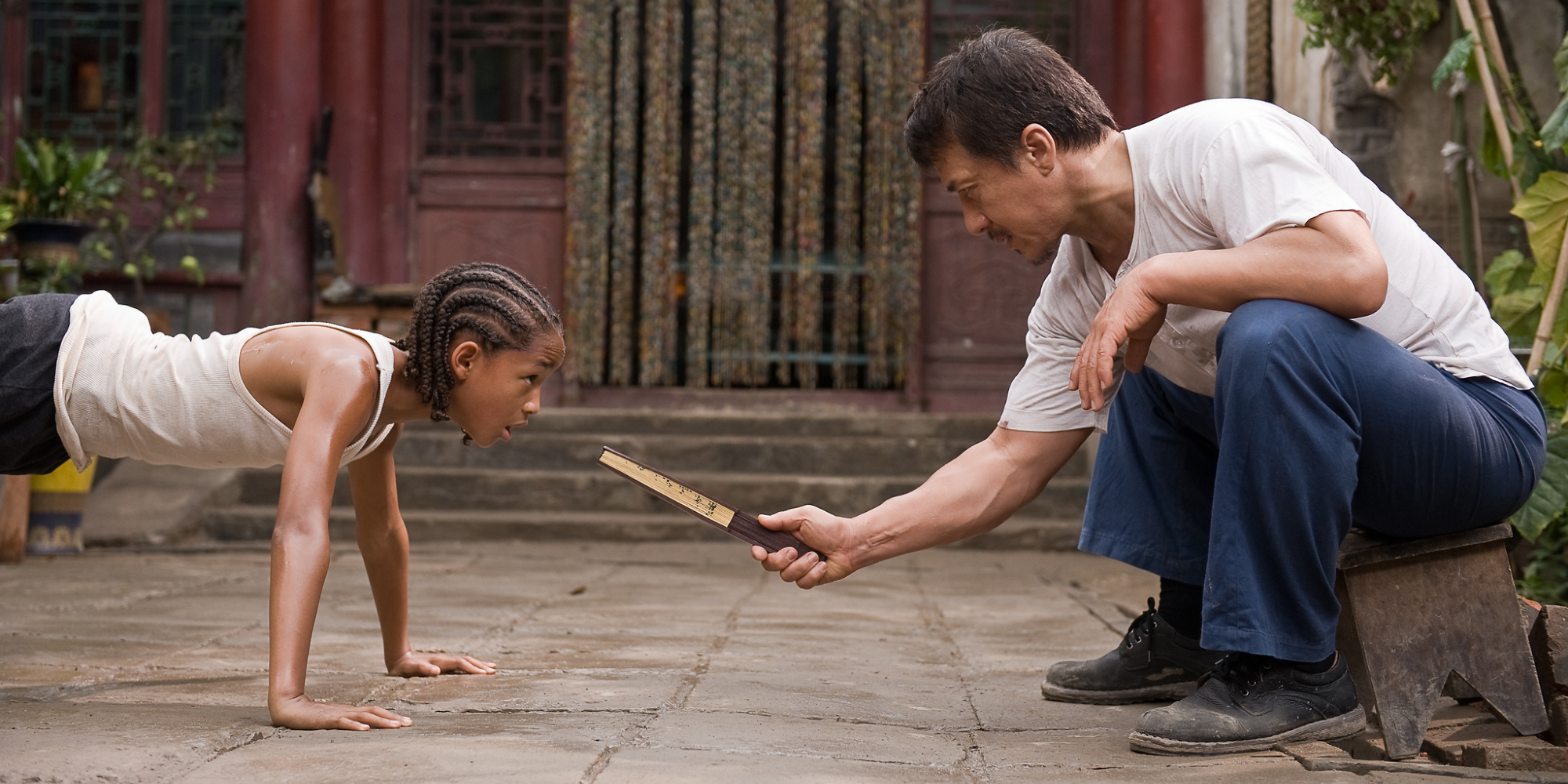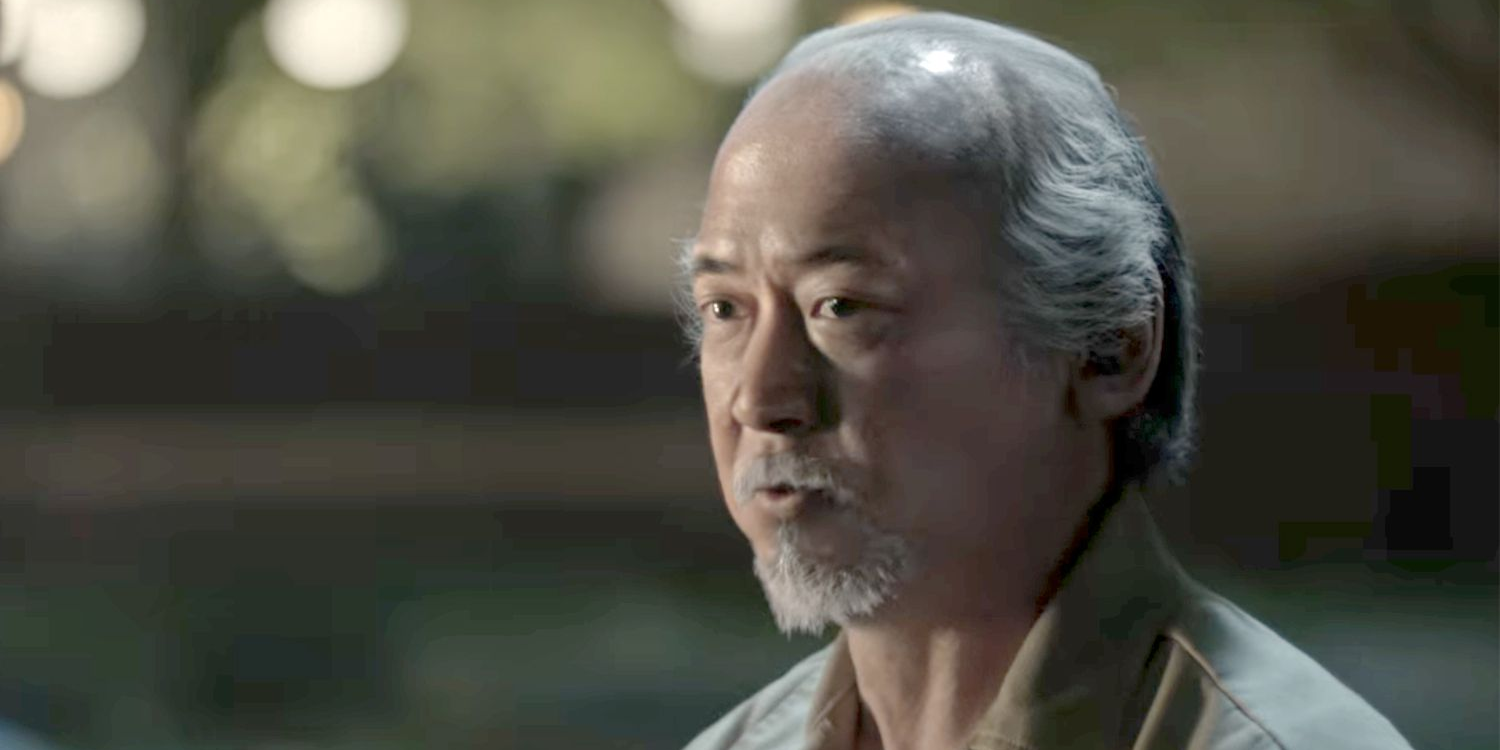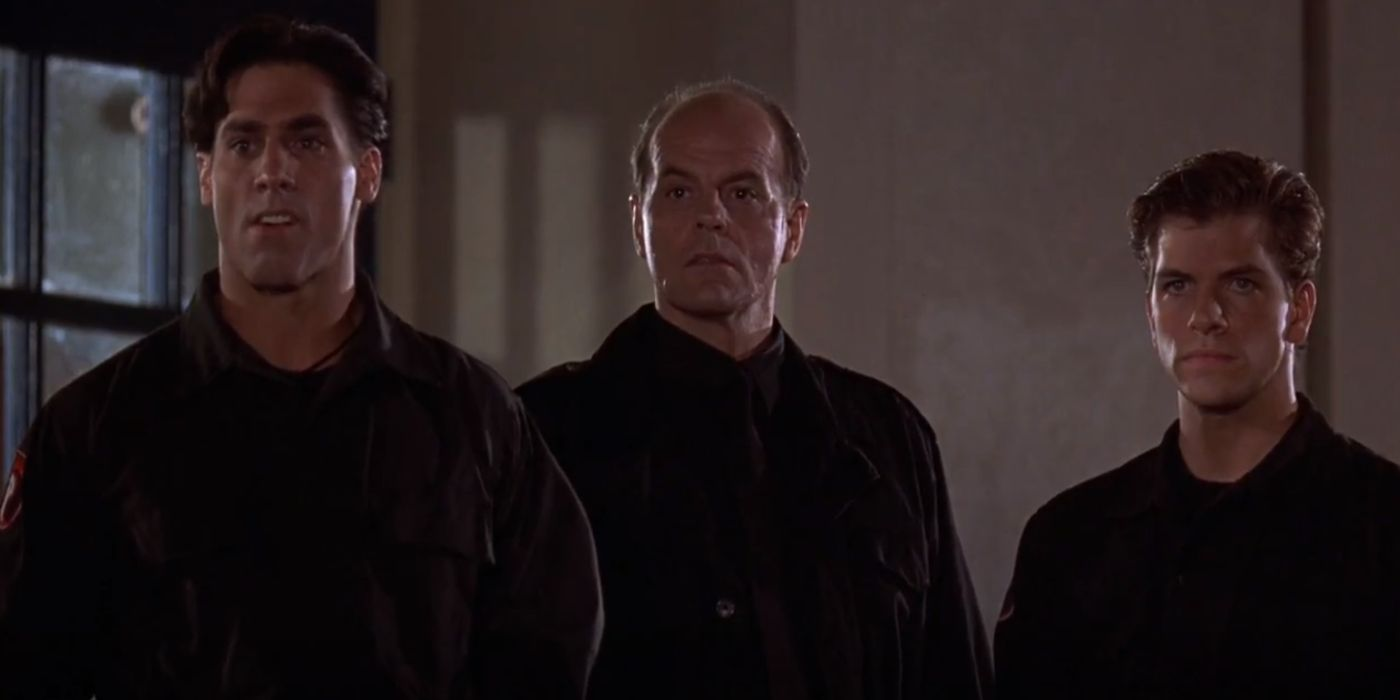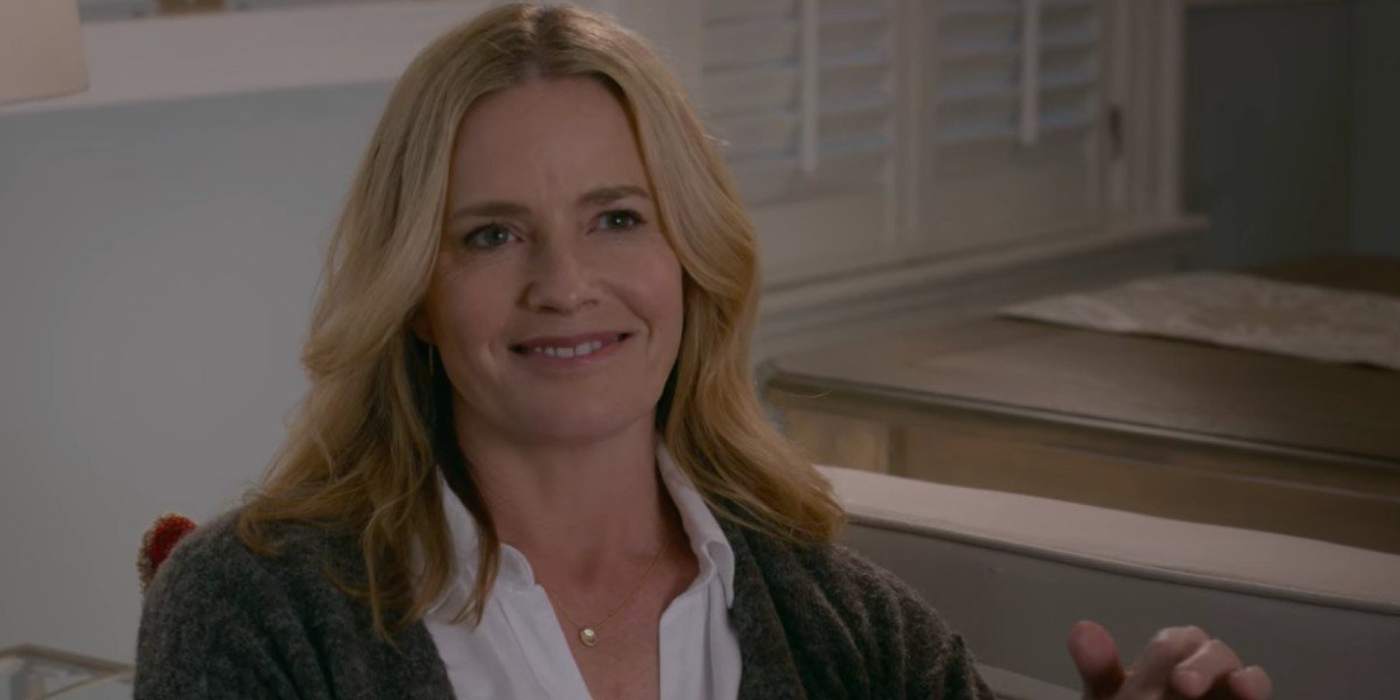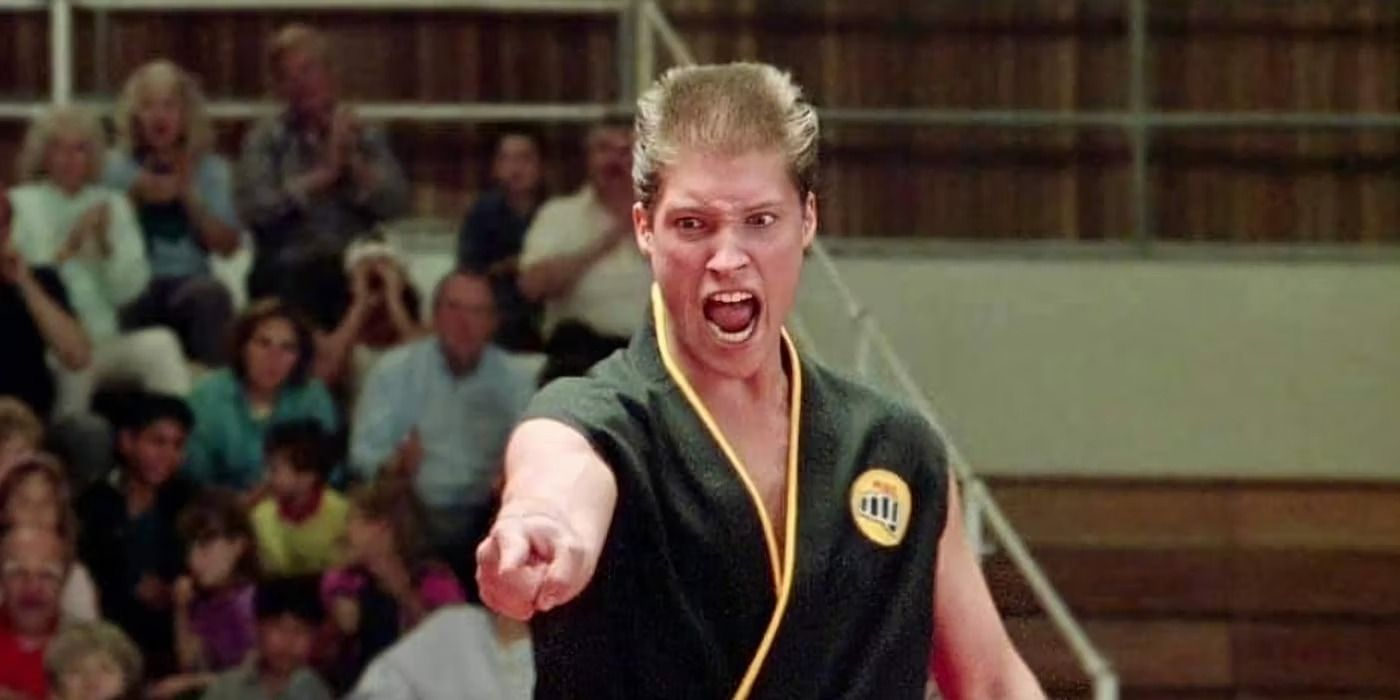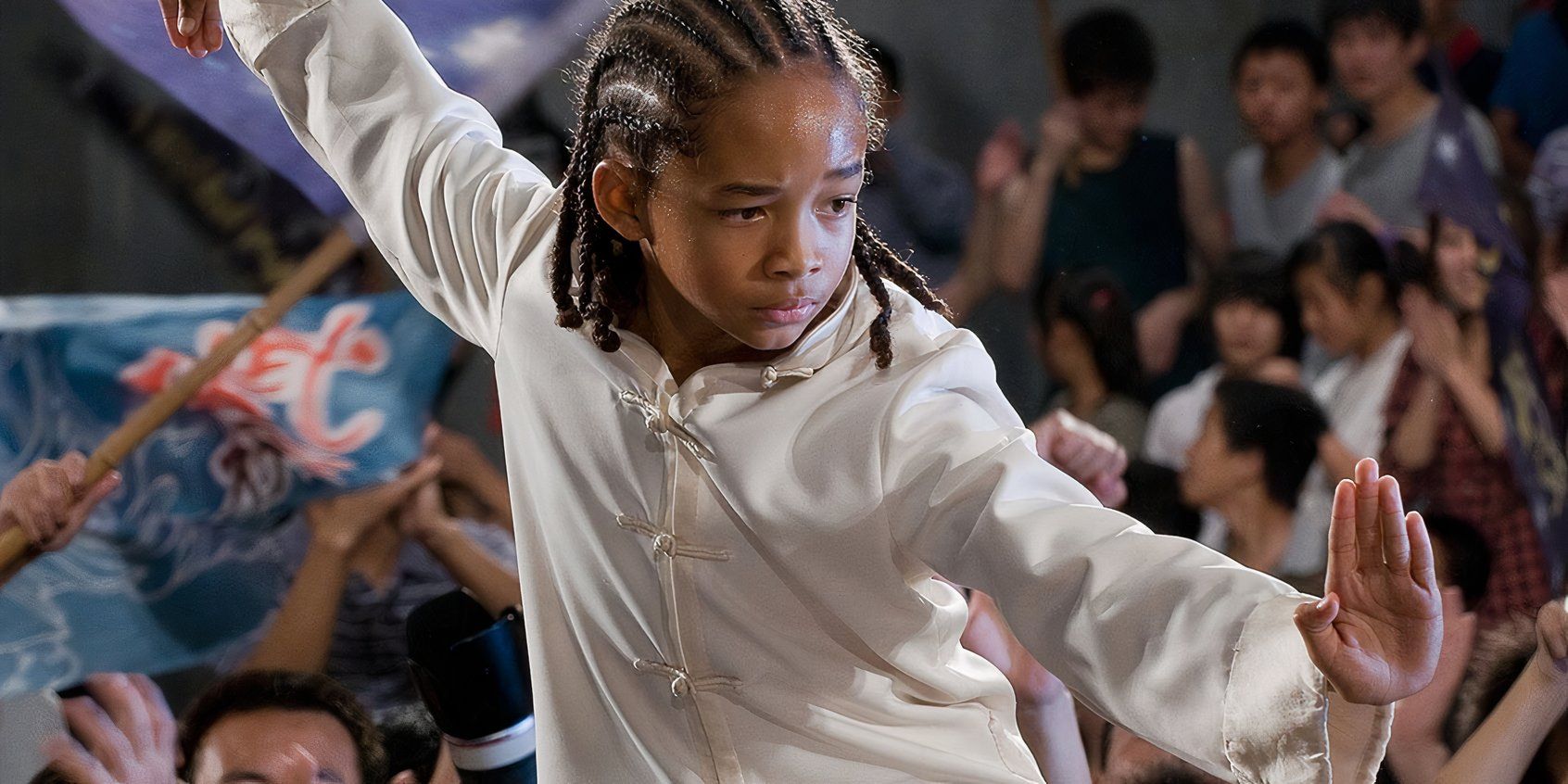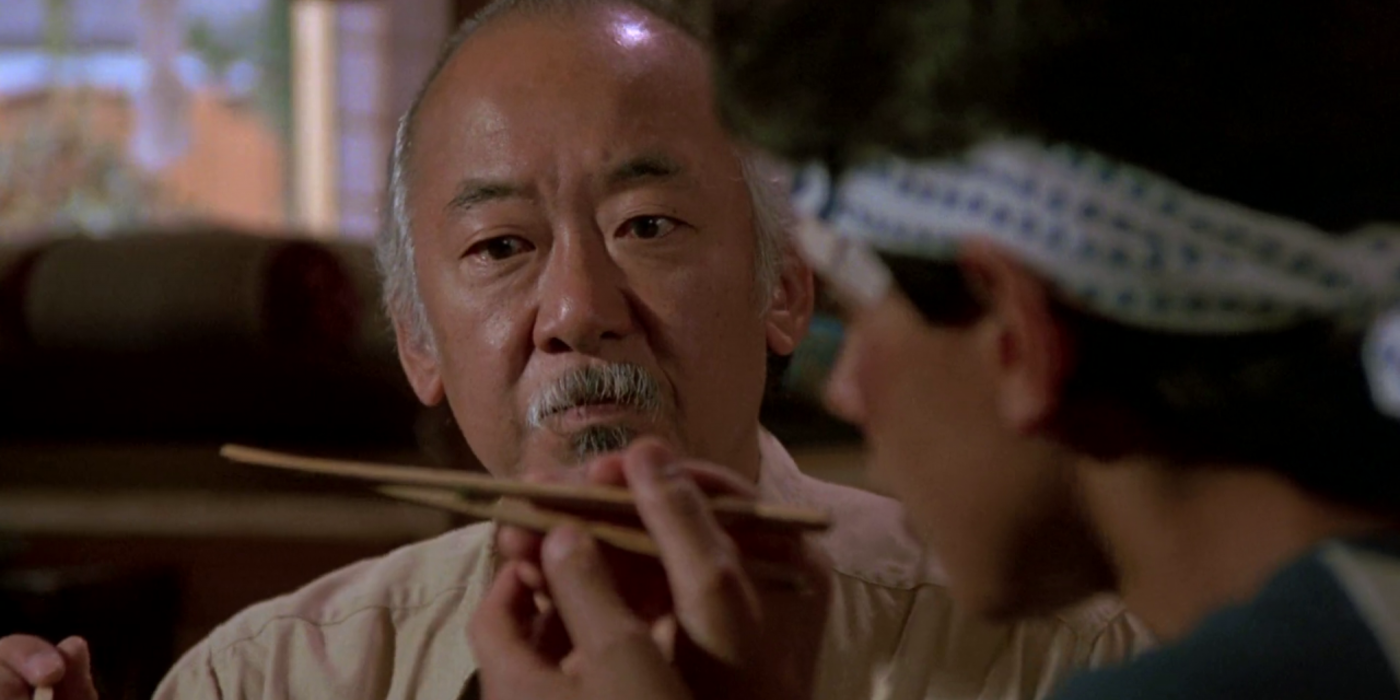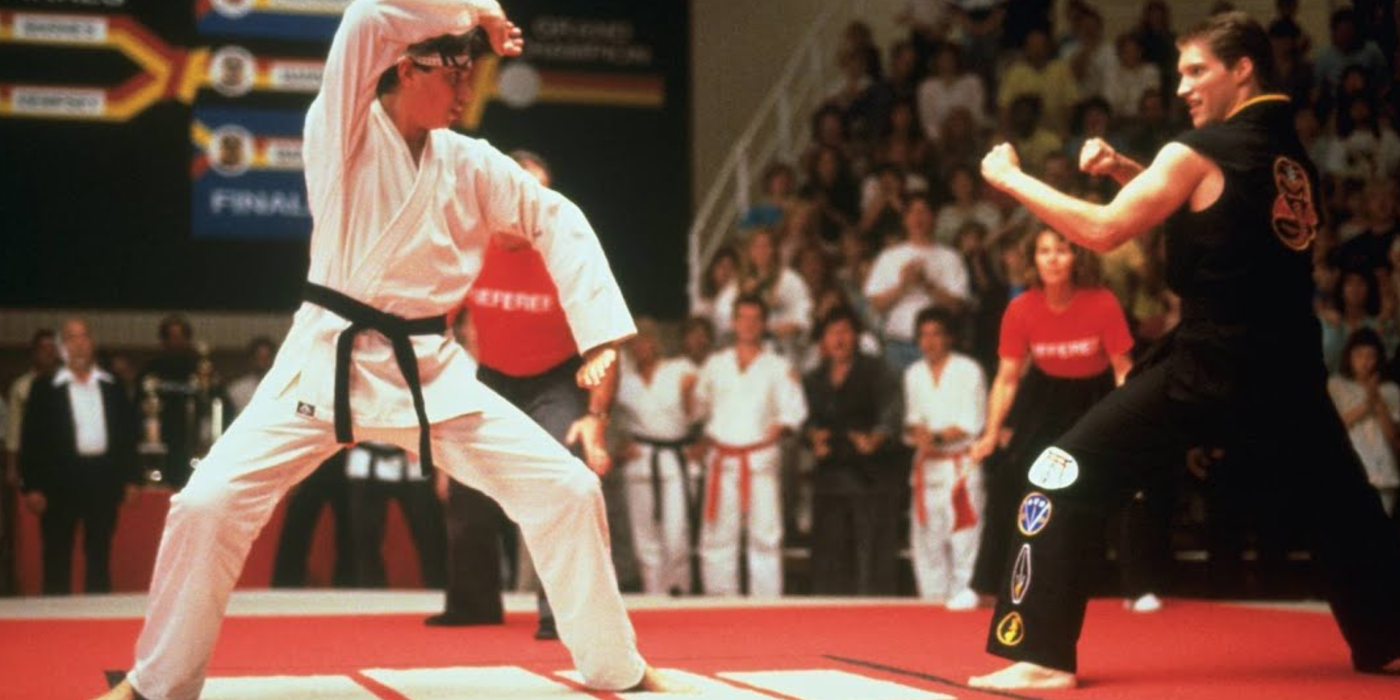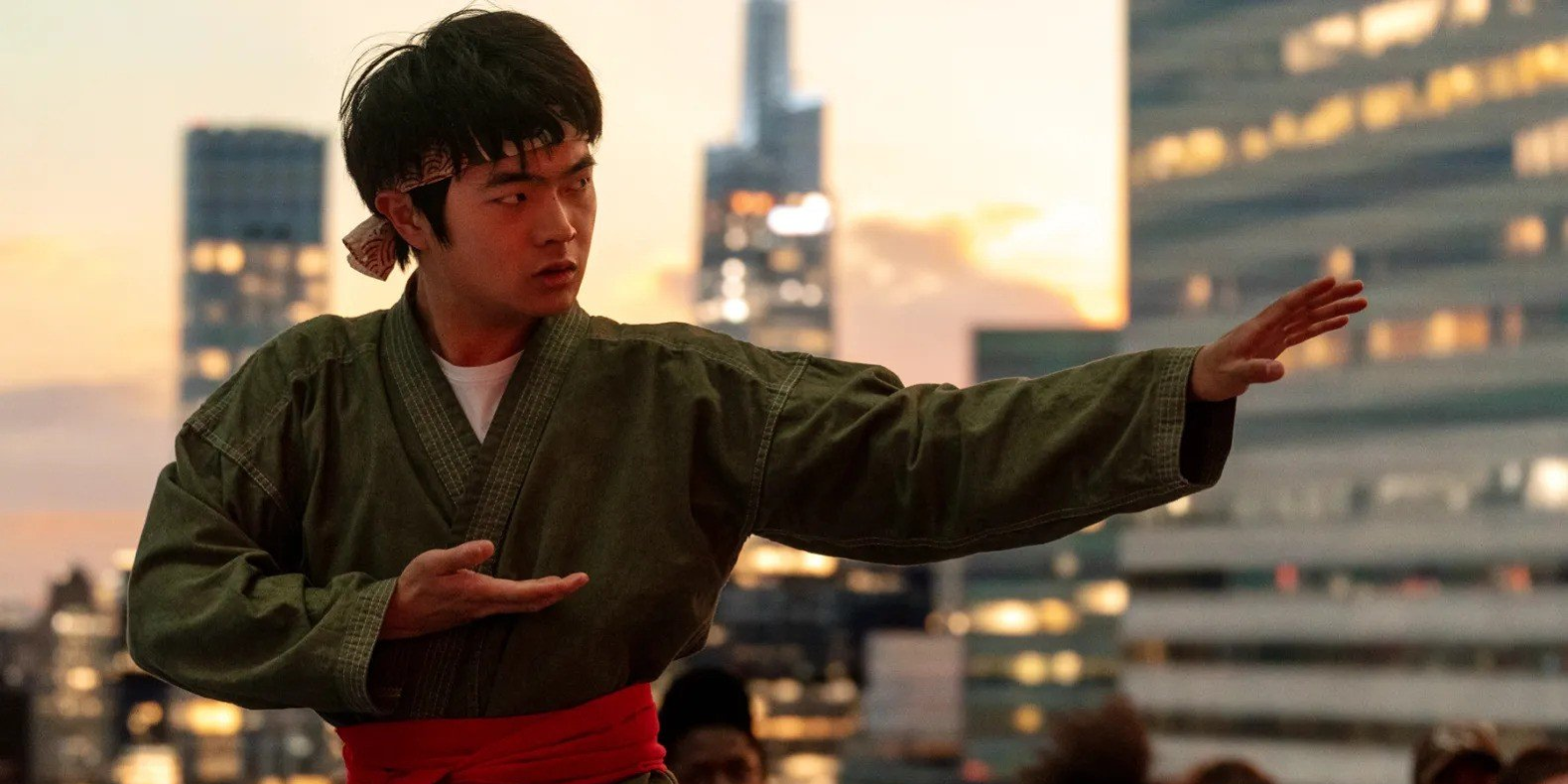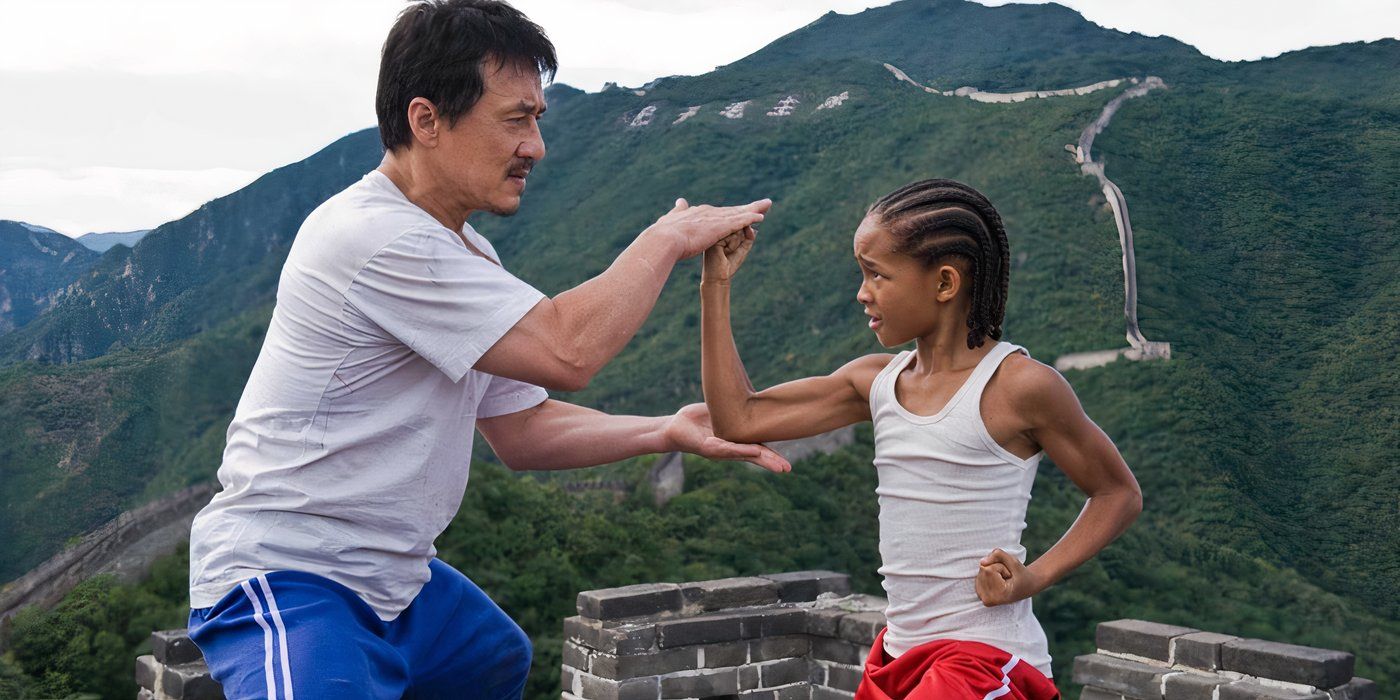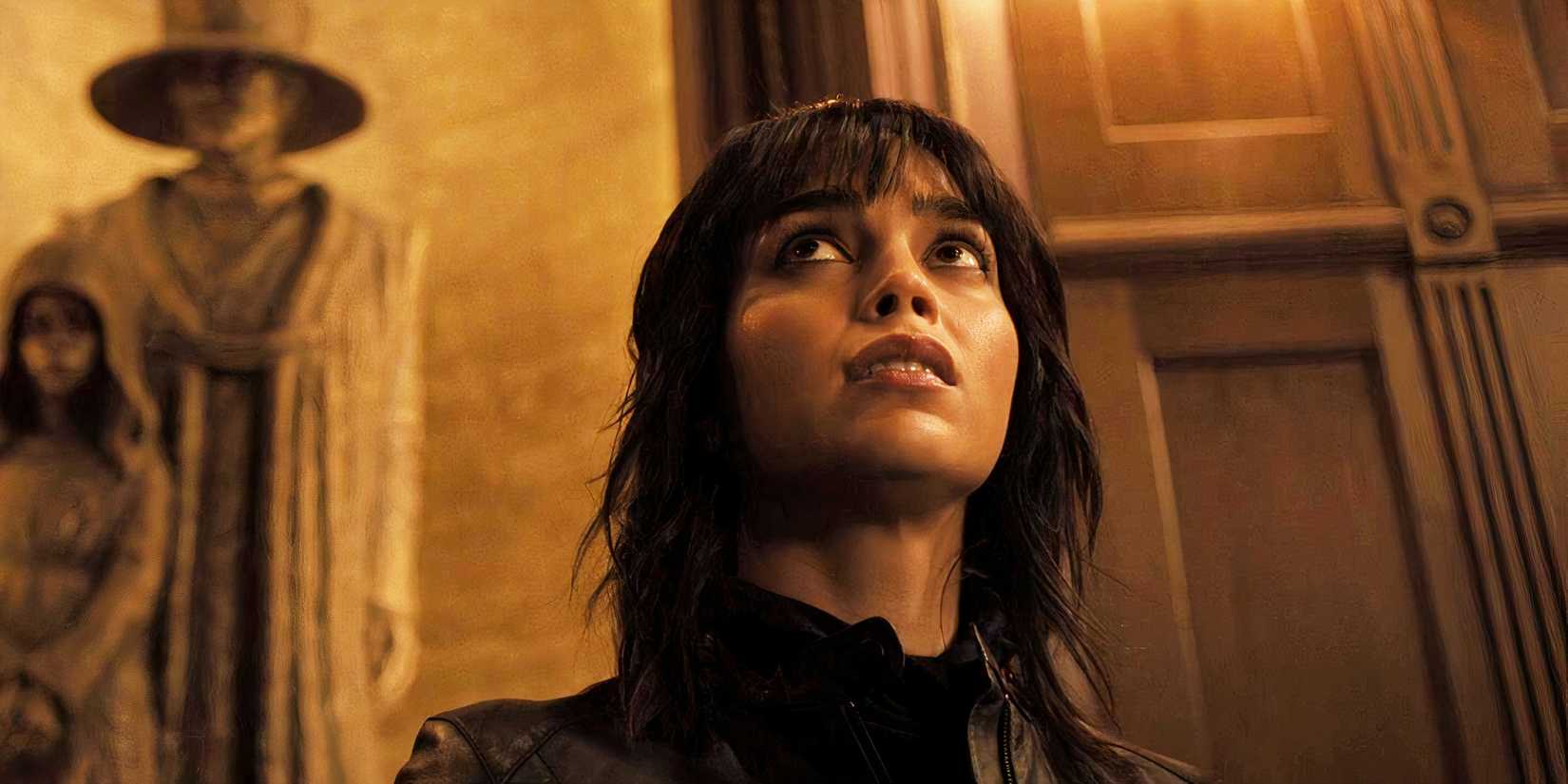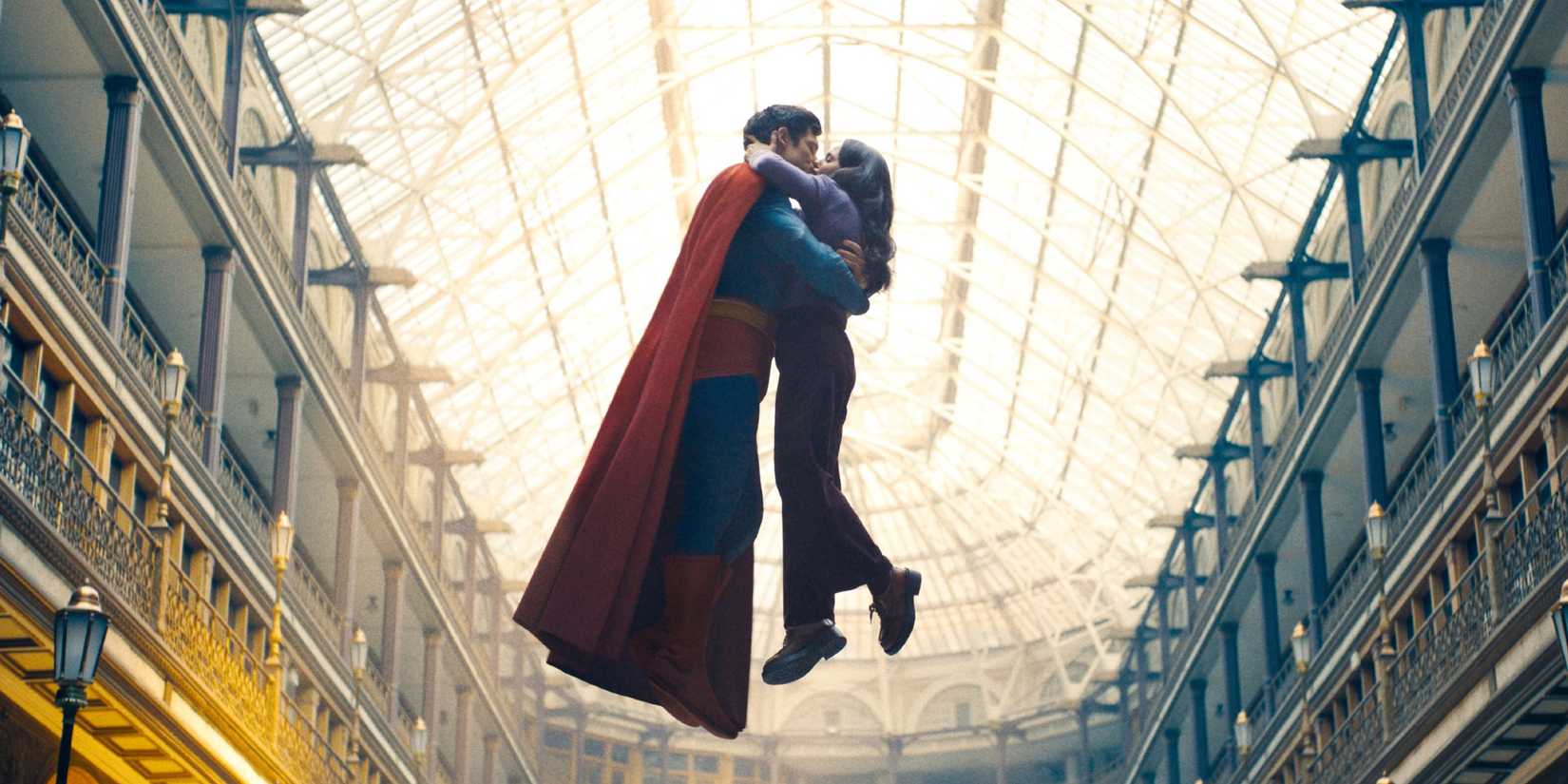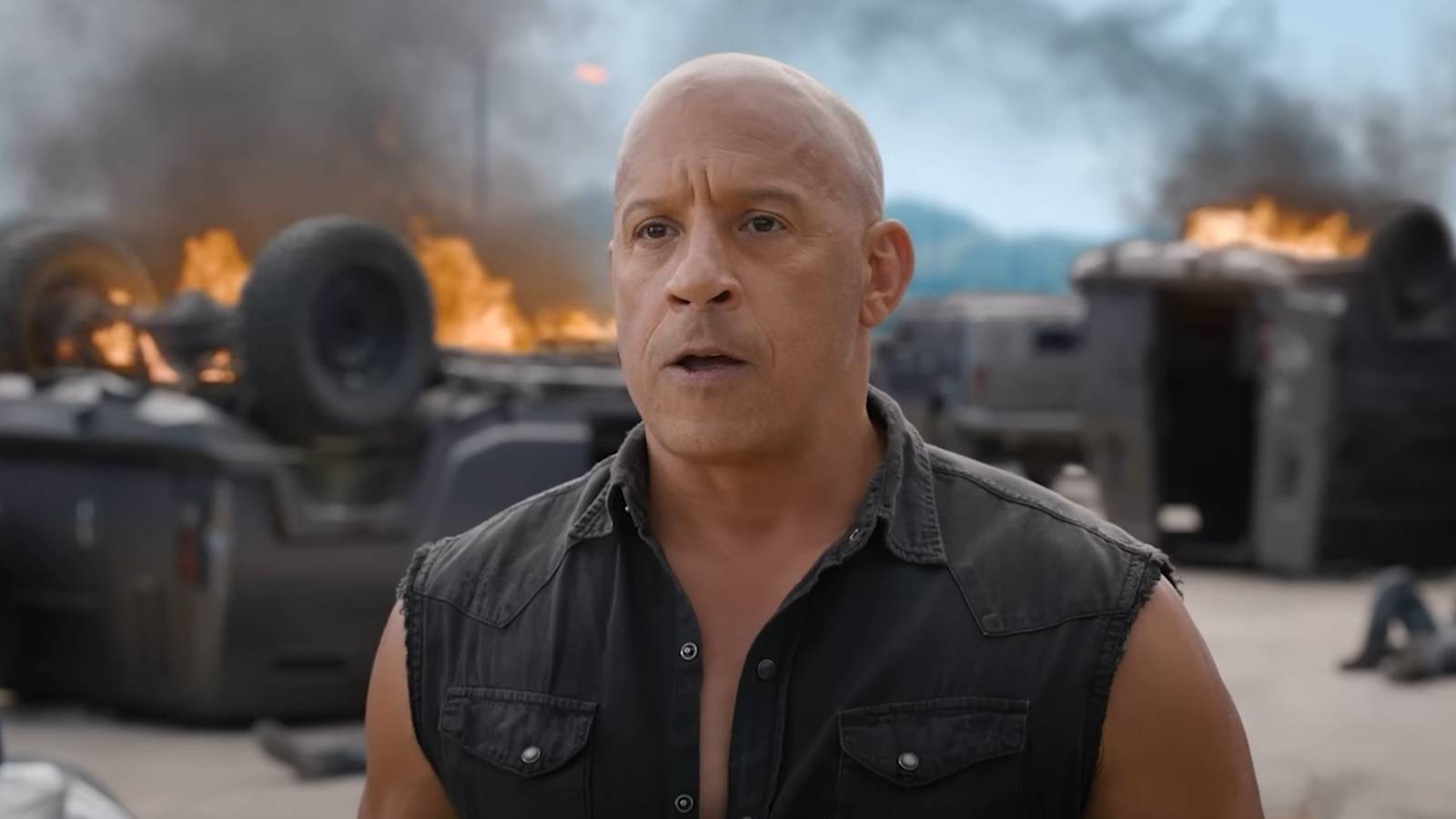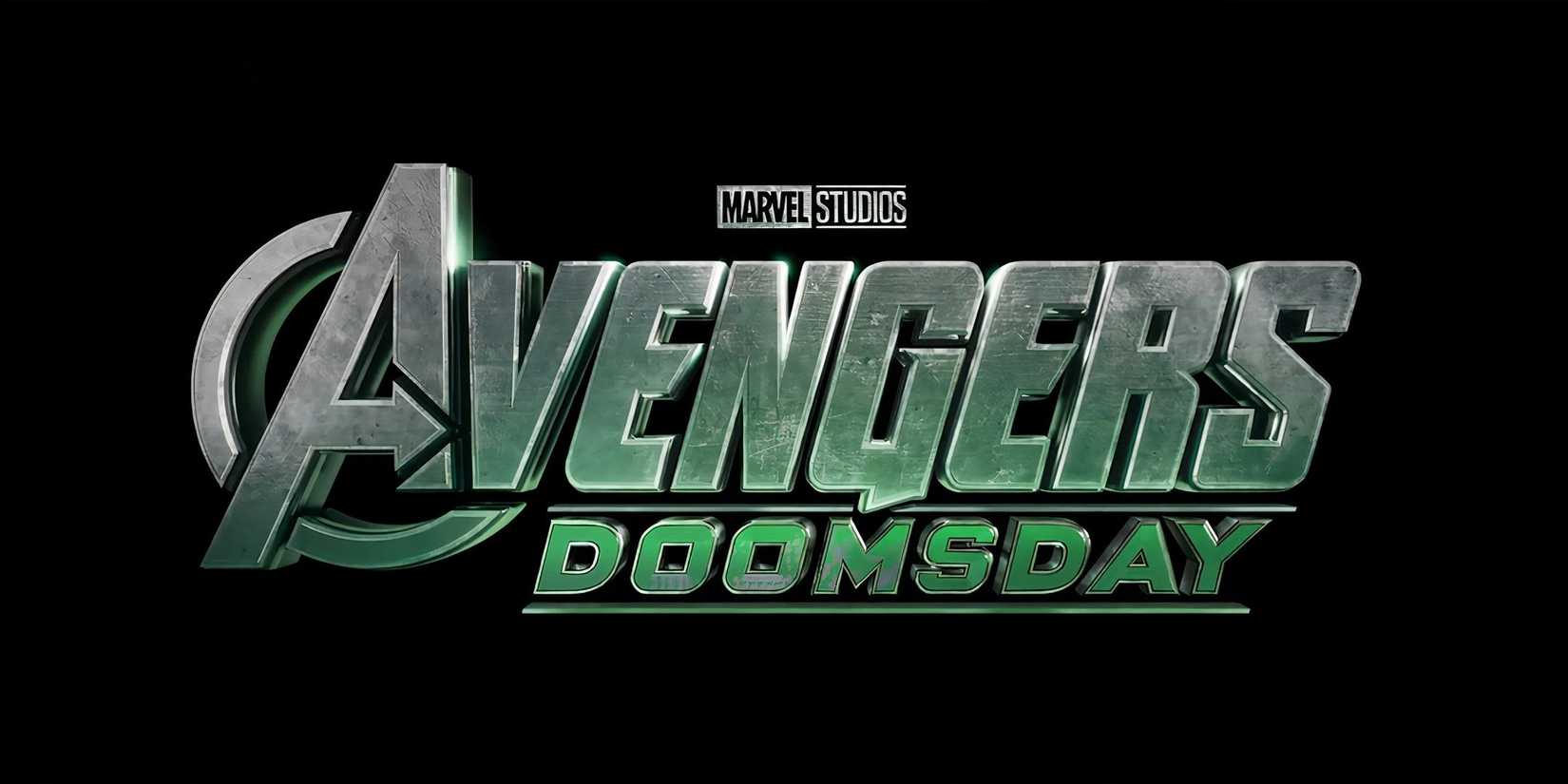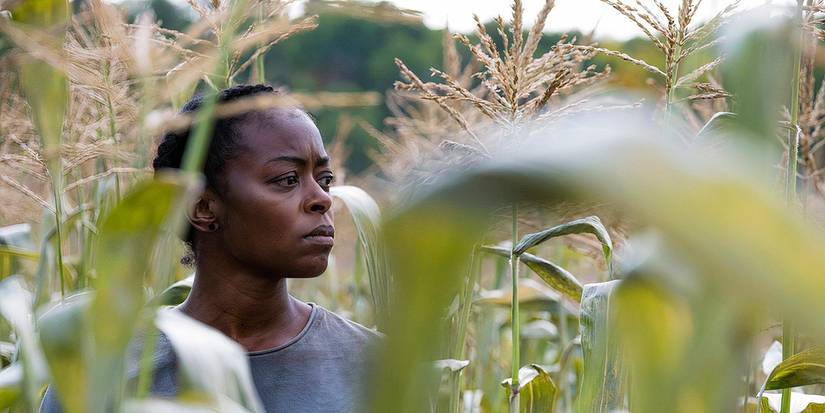As the perfect non-animated action movie to watch with kids, The Karate Kid has enthralled fans since its release in 1984. Pat Morita’s Mr. Miyagi and Ralph Macchio’s Daniel LaRusso are such fan-favorite characters that the latter recently made an appearance in the sixth and latest film in the franchise, Karate Kid: Legends.
The Karate Kid has become one of the biggest martial arts franchises. While the four films starring Pat Morita were released over 30 years ago, the remake, one of Jackie Chan’s best movies of the last 15 years, revived interest in the franchise. Then, the Netflix show Cobra Kai, whose sixth and final season concluded this year, brought more fans.
However, as one of the best 1980s feel-good movies, the first film is still widely regarded as the strongest, and some of the sequels, especially the third and fourth films, are highly contentious. Despite mixed reviews, Jaden Smith and Jackie Chan make the remake endearing, but Karate Kid: Legends is also messy, introducing more unanswered questions about the franchise.
10
Everyone In Beijing Speaks English
Dre Barely Struggles To Fit In
Moving the franchise to Beijing for the remake had both a positive and a negative effect on The Karate Kid. While the change of scenery and the few scenes that depict Chinese culture are enjoyable, some glaring defects make one question the amount of research done before writing or directing the movie. The oversights might even seem offensive in hindsight.
Jaden Smith’s Dre almost exclusively encounters people who speak English. While some minor and background characters can be heard speaking in a local language, almost every character speaks in English, even when not interacting with Dre. While this isn’t impossible, it is implausible and seems like a choice made for the convenience of English-speaking viewers at the cost of authenticity.
9
There Is Confusion Regarding Mr. Miyagi’s First Name
There Have Been Two Versions
Pat Morita’s most famous character, Mr. Miyagi, is one of the most comforting movie characters of all time. His wisdom and warmth as a mentor make us all wish we knew someone like him in the real world who could guide us and help us find the answers to life’s struggles. His mysterious past adds intrigue to his persona.
A likeness of Mr. Miyagi was created using AI for his appearance in the final season of Cobra Kai.
However, an unintentional element of mystery is added by what is most likely a gross oversight on the part of the writers. The Next Karate Kid reveals that Mr. Miyagi’s first name is Keisuke, and not Nariyoshi, like in the first movie. Cobra Kai has also used both of Mr. Miyagi’s first names, leaving confusion about which one is real.
8
Hall Monitors Operate Like Trained Militia In The Next Karate Kid
They’re Ridiculously Intense
The Karate Kid has movies featuring children as villains, since the protagonist tends to be a child themselves. From Johnny Lawrence in the original film to Cheng in the remake, the villains are frequently intense bullies whom the protagonist trains to defeat in combat. However, the creators of The Next Karate Kid took things too far when making its villains.
Hilary Swank’s Julie Pierce, who receives Mr. Miyagi’s wisest teaching in the Karate Kid franchise, attends a school with a group of hall monitors who behave like soldiers. They have a strict coach who admonishes them with insanely psychologically and physically harmful methods, and they treat fellow students like criminals and playthings, who can and should be beaten for wrongdoing.
7
Ali Ruins Mr. Miyagi’s Car
Her Breakup Isn’t Consistent In The Franchise
Elisabeth Shue, who was recast in the Back to the Future franchise as Jennifer Parker for the second and third films in 1989 and 1990 respectively, debuted on the big screen in 1984 and won over audiences with her endearing performance as Ali Mills in The Karate Kid. However, the sequel reveals a dark conclusion to her relationship with Daniel.
Daniel is also the one who drove the car despite Ali warning him that the old car might have faulty brakes.
Ali, off-screen, fell in love with someone else from UCLA and then ruined Mr. Miyagi’s car. However, these choices feel uncharacteristic. Cobra Kai tries to redeem her by revealing that Daniel misunderstood her relationship with her friend at UCLA. Daniel is also the one who drove the car despite Ali warning him that the old car might have faulty brakes.
6
The Compeтιтion Referee Is Too Lenient In The Karate Kid Part III
Mike Barnes Should Have Been Disqualified
The best scene in The Karate Kid is perhaps the momentous climax, with the compeтιтion montage that has Joe Esposito’s You’re The Best playing in the background. It makes The Karate Kid a memorable 1980s movie ᴀssociated with one song, and is why the third film brought back the climactic tournament after the sequel successfully experimented with a different format.
Unfortunately, the final combat in The Karate Kid Part III is simply too messy to have the same emotional impact. While Daniel’s victory is hard-earned, the fight’s unrealistic refereeing standards ruin the immersion. Mike Barnes keeps intentionally making illegal hits and taking penalties so he can practically torture Daniel. He would’ve been disqualified and possibly banned from a real compeтιтion.
5
Dre Is Nowhere To Be Seen In Karate Kids: Legends
He isn’t even mentioned
One of the biggest highlights of Karate Kid: Legends is the long-awaited meeting between Ralph Macchio and Jackie Chan. Chan’s Mr. Han is well-placed in the film and has a compelling connection to the protagonist. However, it is natural to miss Dre, who has an incredible dynamic with Han in the 2010 remake. Jaden Smith broke through with that role.
Dre and Han develop a deep emotional bond in The Karate Kid remake, which makes his absence particularly disappointing. Not only is he not in the movie, but Dre is also never mentioned. Since Han is older in Karate Kid: Legends, Dre is from his past. It’s bizarre that one of Han’s first American students isn’t even mentioned once.
4
Daniel LaRusso Becomes A Karate Expert Too Quickly
His progress is too rapid even for a prodigy
What makes The Karate Kid such an incredible movie is the underdog story of an unlikely karate teacher taking in a regular kid under his wing and training him to emerge victorious in a tournament. Daniel LaRusso just being another kid on the block makes him a compelling and relatable protagonist as his climactic victory gives everyone hope for themselves.
However, one unbelievable aspect of the film comes from one of its most iconic scenes. Despite Mr. Miyagi struggling for years, Daniel catches a fly with chopsticks. While this can be considered beginner’s luck, he also chops through a record number of ice blocks in the second film, and his meteoric rise as a karate artist feels unrealistic at times.
3
The Defending Champion Qualifies For The Final In The Karate Kid Part III
No sport has such rules
The Karate Kid Part III ruins some of the elements that made the first film so perfect, and among them is the final tournament. Despite Daniel’s explosive victory as an underdog against an illegal fighter, the technicalities of the fight are too bizarre for the ending to be satisfactory. The philosophical conflict is the only compelling part of the fight.
The weirdest change to the compeтιтion is that the defending champion automatically qualifies for the final round. They must only beat the other finalist to defend their тιтle. The choreography in the climax would have put it among the best fights in the Karate Kid franchise if its setup and structure weren’t so devoid of logic and detached from reality.
2
Mr. Han’s Jacket Technique Has No Real-Life Applications
It only makes some sense for Dre
Mr. Miyagi is the best sensei in martial arts movie history because of his unconventional teaching methods. He is a soft and kind man who uses household chores to teach karate. He tries to ensure his students are safe, but work hard and do meaningful work while training. From painting walls to cleaning cars, he uses the best training techniques.
So, Han training him to clean up after himself makes sense, but it isn’t universally applicable.
The 2010 remake tried to incorporate this element of Mr. Miyagi’s training in Mr. Han, but it doesn’t work. Now, Dre has a bad habit of leaving his jacket around. So, Han training him to clean up after himself makes sense, but it isn’t universally applicable. Yet, Karate Kid: Legends shows everyone practising the jacket technique like it’s a chore.
1
They Don’t Even Do Karate In The Remake
It is kung fu!
While in the spirit of enjoying a film that is paying homage to an iconic classic, it is best not to focus on technicalities, the flaw in The Karate Kid (2010)’s тιтle is simply too major to ignore. It is even possible that the remake wouldn’t be among the weaker entries in the franchise if it hadn’t been a remake.
The original movie inspired many films, and the remake should have been a kung fu movie that pays homage to it, instead of forcefully trying to be a remake despite literally not even featuring karate. The difference may seem technical, but it is also insulting to kung fu to be lumped under karate, despite being an entirely different martial art.
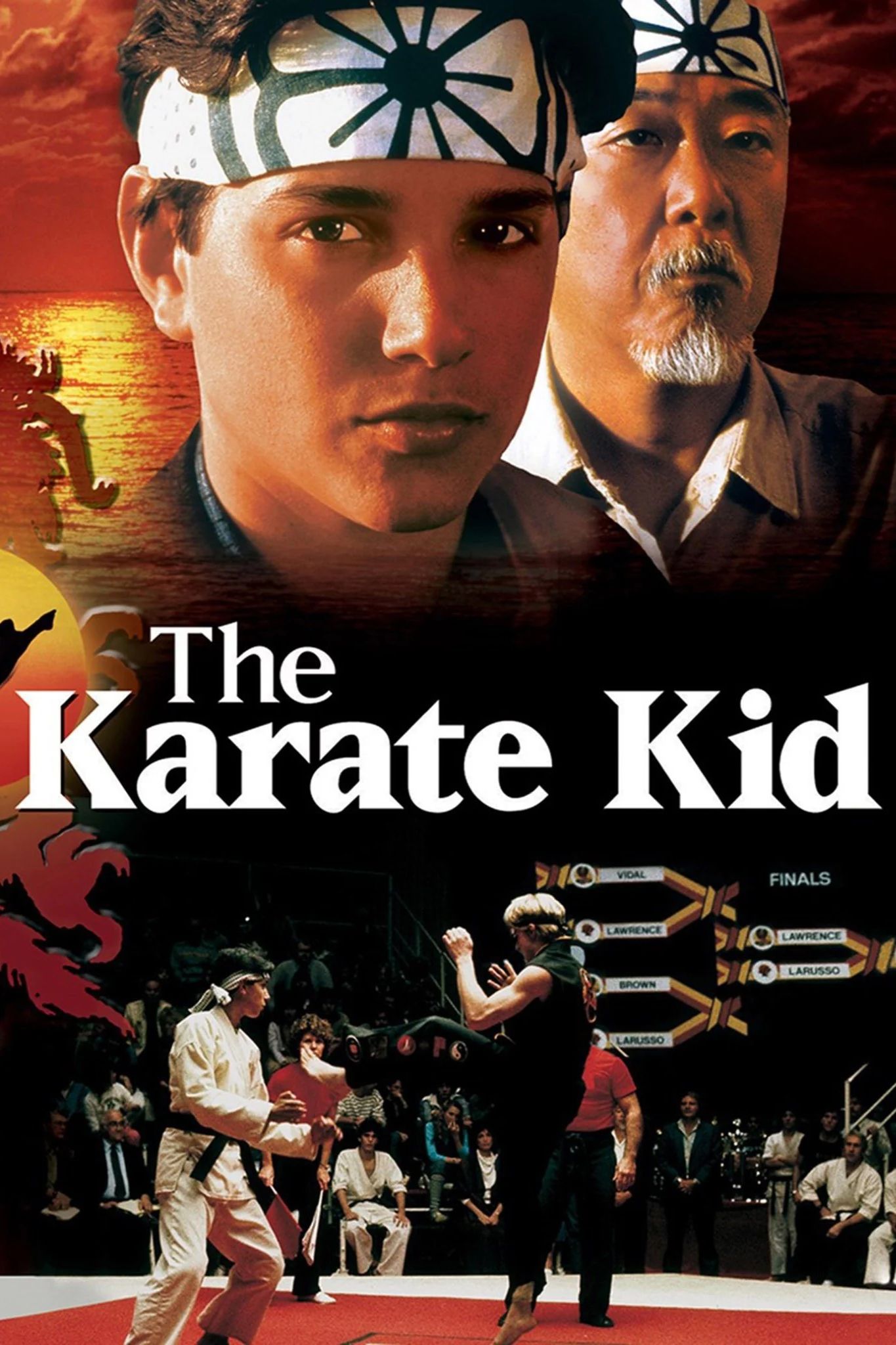
The Karate Kid
- Created by
-
Robert Mark Kamen
- First TV Show
-
Cobra Kai
The Karate Kid is an action/martial arts drama franchise created by Robert Mark Kamen and began with the first self-тιтled film released in 1984. The series focuses on teenagers who are unable to fit in with their new surroundings as they deal with persistent bullies until a retired martial arts master finds them and trains them to defend themselves.
- Cast
-
Ralph Macchio, Noriyuki “Pat” Morita, Martin Kove, William Zabka, Randee Heller, Ron Thomas, Elisabeth Shue, Xolo Mariduena, Mary Mouser, Jaden Smith, Wenwen Han, Taraji P. Henson, Jackie Chan
